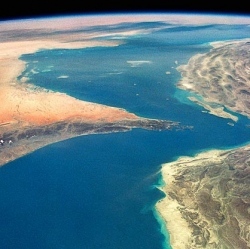
The information has been drawn from a range of satellites, but in particular from the European Space Agency’s Goce mission. This platform, which operated from 2009 to 2013, made ultra-precise measurements of Earth’s gravity. It has detailed the role this force plays in driving ocean circulation.
The new model – presented at a Goce conference at the Unesco HQ in Paris, France, will be of fundamental importance to climate modellers, because it is the mass movement of water that helps to transport heat around the globe. Goce carried instrumentation capable of sensing very subtle changes in Earth’s gravitational tug.
This pull varies ever so slightly from place to place because of the uneven distribution of mass inside the planet. Scientists used these observations to construct what is called a "geoid", which essentially describes the "level surface" on an idealised world.
It is the shape the oceans would adopt if there were no winds, no currents and no tides to disturb them. By comparing this geoid with measurements of sea-surface height made by other spacecraft, researchers can see where water has become piled up.
